In today’s ever-changing digital world, robust and efficient data center interconnection (DCI) solutions are more critical than ever. As businesses grow and their need for information increases, connecting data centers has become essential to planning IT infrastructure because it ensures smooth redundancy and high performance. This manual examines the basic concepts of DCI, investigates different technologies and approaches, and suggests ways how to optimize connectivity between data centers to achieve unprecedented levels of speed and reliability. Whether you work in IT or networking or if you are just an executive trying to understand what is going on, this complete overview will provide you with enough information about DCIs to make knowledgeable decisions about your organization’s strategy towards them.
Table of Contents
ToggleWhat is Data Center Interconnect (DCI)?
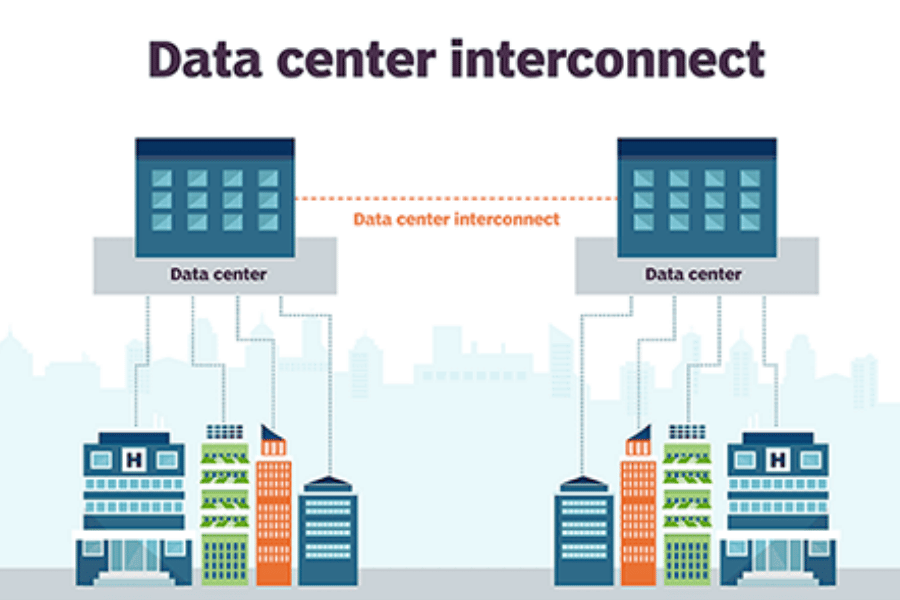
Understanding Data Center Interconnect
Data Center Interconnect (DCI) is a term used to describe the underlying technologies and solutions that connect two or more data centers so that they can function as one. These technologies enable data, applications, and workloads to move between distributed data centers, thereby improving redundancy, load balancing, and disaster recovery. This connection ensures that IT services are always available across different organizations’ locations and data centers, which also enhances scalability and performance.
Why is DCI Important for Data Centers?
Data centers need DCI because it guarantees that data can be transferred smoothly, even if there are interruptions. It achieves this by creating duplicates of information and distributing them across many locations, thus fostering reliability. DCI also performs load balancing, which equalizes resource utilization, in addition to performance optimization. Moreover, it has strong mechanisms for disaster recovery; hence, should any interruptions occur, they would not have significant effects on the system’s operations. There is another advantage to DCI – scalability enhancement: organizations can easily increase their capacities when faced with growing amounts of data while still delivering satisfactory levels of service.
Key Components of Data Center Interconnect
- Transport Network: The foundation of DCI is the transport network, which generally comprises high-capacity fiber optic cables. Such links allow huge amounts of data to be transmitted quickly and securely over long distances with minimal latency.
- Optical Transport Equipment: Dense Wavelength Division Multiplexing (DWDM) and Coarse Wavelength Division Multiplexing (CWDM) technologies are part of this group. They make use of multiple wavelengths so that various data signals can travel concurrently through existing fiber infrastructure, thereby maximizing bandwidth.
- Interconnect Protocols and Standards: Ethernet, MPLS (Multiprotocol Label Switching), and OTN (Optical Transport Network) are types of protocols used for connecting different centers together with efficient transmission systems, such as routers, while ensuring compatibility between them. In other words, they ensure that information is properly fragmented into packets and sent across various networks successfully.
- Network Interface Devices (NID): These devices act as intermediaries between dissimilar parts of a network, allowing improved transfer rates or higher reliability. They enhance performance levels during DCI operations, where data must pass through many segments before reaching its destination point.
- Carrier Ethernet Services: These offer flexibility, scalability and cost efficiency when it comes to implementing Data Centre Interconnectivity since they support different topologies that can achieve robust SLAs within them.
- Data Encryption: Security should always be considered even if the information being transmitted seems harmless; therefore, encrypting such type protects against hackers who might want to tap into those communication lines connecting one center with another.
All these features together bring about smooth functioning between many centers at once as well highest level security in modern computing architectures based on DCIs.
How Does DCI Benefit Network Architecture?
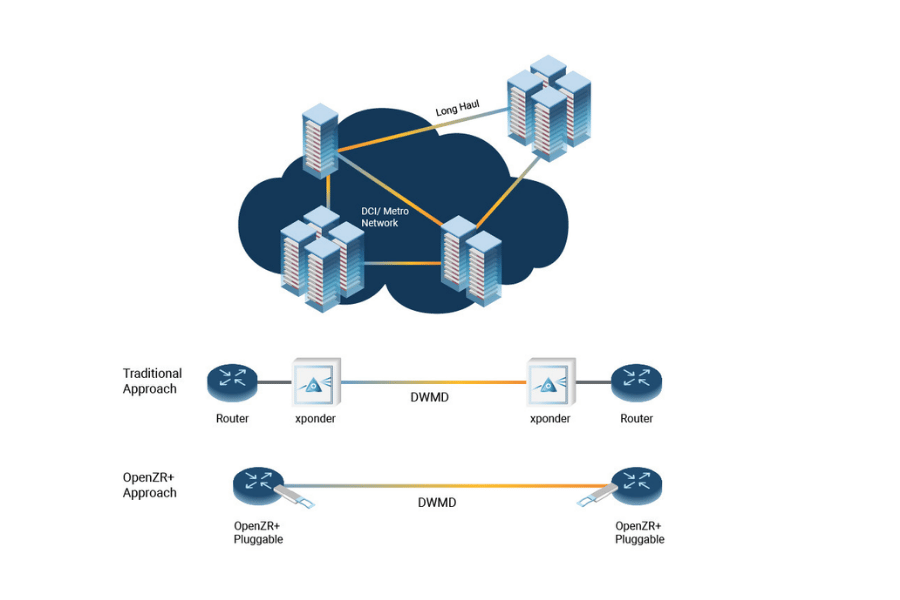
Optimizing Network Scalability and Bandwidth
In Data Center Interconnect (DCI), advanced technologies and strategic methodologies are used to make the network more expandable and increase its bandwidth. First of all, the bandwidth can be increased greatly by applying Dense Wavelength Division Multiplexing (DWDM), which enables many data channels to pass through one optic fiber cable, thereby multiplying the capacity available for use. Secondly, scalability and efficiency within the network can be achieved by using Ethernet-based interconnect protocols that are still compatible with existing infrastructure. Also, dynamic provisioning is made possible with SDN, which allows software control over the allocation of resources, leading to higher utilization rates and making it easier for networks to grow when necessary. All these methods ensure that DCI networks can adapt themselves according to their changing demands and optimize traffic flow so that there is no congestion anywhere along them, thus reducing the overall inefficiency of such systems.
Enhancing Data Center Traffic Management
To make better data center traffic management, advanced methods and technologies must be applied to control the information stream in a network system effectively. These are:
- Load Balancing: Sharing all incoming network traffic across many servers equally so that one server does not become overloaded guarantees availability at all times and optimizes performance.
- Quality of Service (QoS): Giving priority to different types of data transmitted over a network depending on its significance; this ensures that the bandwidth required for best performance is allocated with low latency for critical applications.
- Traffic Analytics and Monitoring: Tools are used to detect current patterns in the flow of network activity instantly, thus identifying likely bottlenecks or inefficiencies before they occur. Effective monitoring maintains good data flow while increasing overall reliability across networks.
The integration of these techniques greatly enhances how traffic is managed within data centers by ensuring efficiency as well as reliability while transmitting information through various parts of a network infrastructure.
Improving Data Security and Reliability
Achieving better security for data centers and making their services more reliable involves implementing multi-layered physical, network, and application-level protective measures. Some of them are as follows:
- Physical Security: To avoid unauthorized entry into the data center facilities, strict access controls should be put in place, surveillance systems should be used, and access to sensitive areas should be limited.
- Network Security: Firewall off external threats using firewalls or VPNs (Virtual Private Networks) and ensure secure data transmission through intrusion detection systems coupled with prevention systems. Patch network components frequently, thus covering any vulnerability that may be there.
- Data Encryption: The use of encryption methods on rest-transit data is necessary to safeguard private details against unauthorized users. This means that even if the information is intercepted or accessed illegally, it would still not be understandable by anyone else apart from those with the decryption keys.
- Redundancy and Backup: Cyber attacks may lead to hardware loss or cause other disruptions, resulting in data losses. Therefore, it’s important to have backup devices/systems that are regularly maintained and have spare parts readily available. Additionally, backups should comprise storing copies at different geographical locations.
- Authentication and Access Control During a network’s entire lifecycle, strong authentication mechanisms, including multi-factor authentication (MFA), must be enforced together with precise access control policies so that only authorized individuals can access any part of the system/data at any given time.
- Regular Audits and Compliance: To stay on track with security standards, carry out frequent audits while ensuring compliance with relevant industry regulations such as PCI-DSS, HIPAA, or GDPR.
Integration of these steps will go a long way in heightening security posture within data centers, thus fostering protection together with dependability for mission-critical information resources.
What Are the Most Effective DCI Solutions?
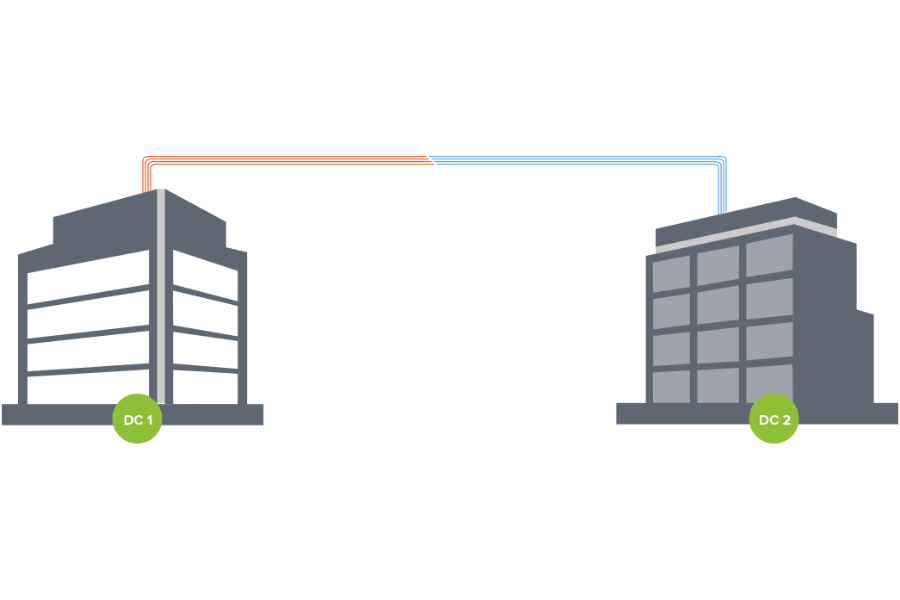
Overview of Popular DCI Technologies
In order to comprehend the best Data Center Interconnect (DCI) solutions, it is necessary to assess the technologies commonly recognized and used by leading industry sources.
- OTN: Optical Transport Networks (OTN) are popular in DCI implementations because they offer high bandwidth capacity, reliability and low latency. It supports different data rates and protocols making it ideal for connecting several data centers. Moreover, this technology also provides strong error correction capabilities that ensures data integrity during transmission over long distances.
- EoMPLS: Ethernet over MPLS (EoMPLS) uses Multiprotocol Label Switching (MPLS) scalability and flexibility to extend Ethernet capabilities across different data centers. This approach has been hailed as one of the most efficient ways to enable cost effective connections which can scale easily. EoMPLS can support various services such as point-to-point or point-to-multipoint configurations thereby simplifying complex network management within the data center.
- WDM: Wavelength-Division Multiplexing (WDM) is designed to maximize fiber optic utilization by sending many independent streams of data on different wavelengths simultaneously. This technique significantly increases bandwidth without requiring additional fiber infrastructure. Depending on ultra-high bandwidth or cost-efficiency requirements, dense WDM (DWDM) or coarse WDM (CWDM) may be used respectively in a given DC.
These technologies are well known for their ability to establish dependable, secure and high-performance interconnections between data centers which fulfill diverse modern enterprise needs.
Choosing the Right DCI Solution for Your Needs
Choosing the right Data Center Interconnect (DCI) solution depends on many factors, such as bandwidth requirements, distance, cost, and scalability. First off, evaluate your bandwidth needs to see if Dense Wavelength-Division Multiplexing (DWDM) or Optical Transport Networks (OTN) are needed for high-capacity demand technologies. For shorter distances with moderate bandwidths, Ethernet over MPLS (EoMPLS) may be a scalable and cost-effective option.
One should consider the geographic distance between data centers because OTN has robust error correction capabilities that make it efficient for long-haul transmissions. On the other hand, when dealing with shorter distances and simpler setups, EoMPLS can offer enough scalability and flexibility. Budget is also key; DWDM might have higher infrastructure costs despite providing ultra-high bandwidths, whereas EoMPLS can be more affordable because its service configurations can be easily modified.
Eventually, you need to think about future scalability as well as the overall network lifecycle in making your decision here. It’s possible to expand greatly using technologies like DWDM or OTN while still ensuring that there is room for growth within your network infrastructure with regard to surging data demands. Matching these thoughts against specific enterprise requirements will lead one towards finding suitable DCI solutions that guarantee the best performance coupled with reliability on the connectivity of various centers storing information.
Evaluating Performance and Cost-Effectiveness
To ensure that a decision is well-rounded, it is important to evaluate performance metrics as well as the cost-effectiveness of DCI solutions. Evaluation of the performance includes looking at latency, throughput, and reliability. Low latency and high throughput connections are delivered by technologies such as DWDM, which makes them suitable for use in applications that are sensitive to latency. On top of its robust error correction capability, which ensures reliable data transmission over long distances without much degradation in performance, OTN also performs fairly well where evaluation is based on reliability.
From the cost point of view, initial capital expenditure (CapEx) should be weighed against ongoing operational expenses (OpEx). Normally, DWDM has a higher upfront setup cost due to its wide bandwidth capabilities, but it can still turn out to be cost-effective in the end because it can scale easily without requiring many more investments into infrastructure as demand for data grows over time. Conversely, EoMPLS has relatively lower upfront costs with greater flexibility, thus making them ideal, especially when working under tight budget constraints or needing quick implementation; however, this might lead to higher operation costs later on.
In summary, therefore, one needs to make tradeoffs between costs and performance while choosing among different DCI solutions. This means that such decisions must take into account business strategies alignment together with future plans for expansion so that enterprises may invest wisely in their infrastructures based on both technical specifications and financial implications.
How do you deploy Metro DCI for enhanced connectivity?
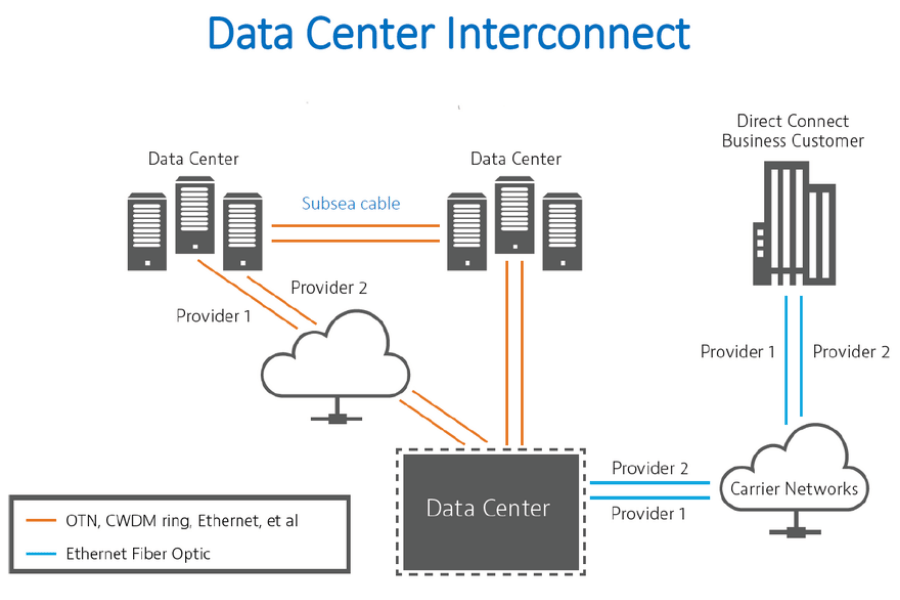
Step-by-Step Guide to Metro DCI Deployment
Step 1: Evaluate Needs and Goals
Before deploying a Metro Data Center Interconnect (DCI), take stock of the exact needs and goals of your organization. This entails understanding how much bandwidth is required, what latency can be tolerated, what level of reliability is desired, and how much scalability will be needed in future. An initial evaluation helps to ensure that the solution chosen aligns with strategic objectives.
Step 2: Select Suitable DCI Tech
Choose the right DCI technology based on assessed needs. Some commonly used technologies are dense wavelength division multiplexing (DWDM), Optical Transport Network (OTN), and Ethernet over MPLS (EoMPLS). Each has its own advantages in terms of performance, cost-effectiveness, and scalability, so technical analysis should guide this decision-making process alongside financial considerations.
Step 3: Plan Network Architecture
Design network architecture that best supports selected DCI tech. This involves deciding where to place transponders; integration with other supporting equipment such as amplifiers etc.; layout of optical fibers among other aspects. The design must consider current data flow patterns as well as anticipated future growths for efficiency and reliability in long run.
Step 4: Implement Physical Infrastructure
Set up physical components required by DCIs, which include laying fiber optic cables, installing transponders, etc., but not limited to these two mentioned only. This stage demands careful planning so as not to disrupt existing services unnecessarily while ensuring compliance with relevant regulations.
Step 5: Setting up network devices
Configure network devices based on the architecture designed when you have completed building your physical infrastructure. This comprises configuring routers, switches, and other tools for managing networks to promote the flow of data, monitoring performance, and ensuring strong error correction and data integrity.
Step 6: Testing for Performance and Reliability in Networks
Conduct thorough tests that validate DCI performance and reliability. These include measuring indicators like latency, throughput, and error rates. The different conditions under which testing should be done aim to ensure that a network can meet the required performance standards and efficiently handle maximum amounts of data during peak hours.
Step 7: Monitoring & Maintenance of Network Systems
Maintenance activities, together with constant monitoring, come in handy immediately after deployment so as to guarantee steady operation, as well as identify potential problems early enough before they escalate into something serious. Use an elaborate network management system for tracking performance metrics and automating maintenance tasks besides keeping pace with changing technological standards as well as business requirements through regular upgrading and updating.
Therefore, enterprises can follow these stages to ensure they have implemented Metro DCI networks that will foster connectivity and facilitate expansion plans while still aligning with strategic goals.
Best Practices for Metro DCI Implementation
Choose scalable solutions
Choose scalable solutions according to your business’s growth. This may include hardware and software that can be easily upgraded or expanded without requiring a lot of work, ensuring their durability in the long term.
Give priority to security
In any Metro DCI implementation, security should be taken as the first thing into account. Advanced encryption methods, multi-factor authentication, and frequent security audits must be employed so as to secure sensitive data from breaches or cyber threats.
Make sure systems are interoperable
Ensure that you select systems that can work with many different vendors and technologies, enabling smooth integration between them. This will also help reduce reliance on one vendor and facilitate easier integration with existing infrastructure, fostering flexibility and resilience across the network environment.
These are some best practices, among others, that, if followed, will enable enterprises to establish strong, safe, and expandable metro DCI networks capable of meeting both present and future needs.
Troubleshooting Common Deployment Issues
Delays in Communication and Bottlenecks in Performance
A common challenge that can be faced while deploying Metro DCI is delays in communication and bottlenecks in performance, which may affect the whole lifecycle of interconnectivity. Some of the ways to deal with this is by carrying out a proper assessment of networks before deployment so as to know where they are weak. Continually access traffic levels within a network using tools meant for that purpose and divert data streams through different channels to reduce crowding at one point. Other than this, it would be good if we could consider giving priority only to critical information when implementing policies such as QoS or quality of service.
Inability to Work With Already Existing Systems
Problems related to hardware and software compatibility can arise when new components are integrated into old systems. To solve this issue, make sure that whatever you choose works with multiple vendors and technologies. Also, use standard protocols plus open interfaces so that they can easily fit in without any hitches. Furthermore, do not forget about upgrading your current system and adding new ones throughout the life cycle since failure may result from a lack of agreement.
Weaknesses in Safety Measures
Another thing that should never be overlooked during Metro DCI deployment is security vulnerabilities because they can undermine everything, including performance, over time. Therefore, all areas should be checked by conducting an audit on each one; then, penetration tests should be carried out where possible to identify possible entry points for hackers. Moreover, applying advanced encryption methods like zero trust models coupled with strict access controls plus continuously updating policies related to security will protect against attacks. When dealing with these problems, always ensure compliance with industry standards and be alert about emerging threats.
Addressing these general challenges during implementation will help organizations create a robust, efficient, and secure Metro DCI network environment.
How to Optimize DCI Networks for Hyperscale?
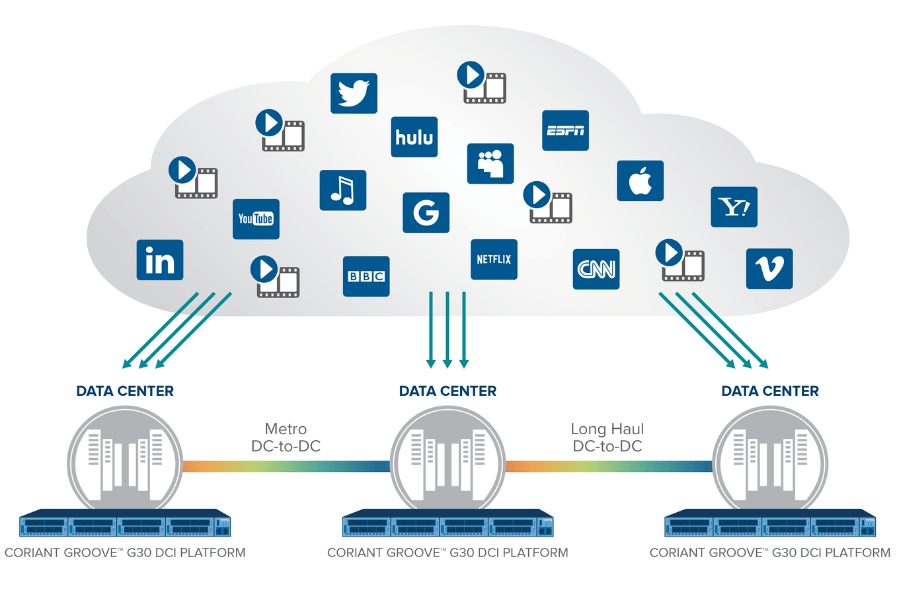
Scaling Data Centers with High-Speed Connectivity
To support quick growth and rising demand for data storage and processing, data centers need to be built at scale. Such hyperscale Data Center Interconnect (DCI) networks can be optimized using different optical fiber technologies including Dense Wavelength Division Multiplexing (DWDM) which permits the transmission of large amounts of information over long distances with low latency.
Another way of optimizing DCI networks for hyperscale is by integrating software-defined networking (SDN), which enables flexible network management and traffic optimization, leading to efficiency. This means that bandwidth can be assigned dynamically while adjusting network paths in response to real-time requirements, thus improving overall performance and scalability.
Furthermore, it is possible to improve DCI networks through edge computing strategies where data is processed near its source, thereby reducing centralization pressure on data centers and enhancing response times. These approaches, together with others, should, therefore, serve as useful tools for ensuring the efficient scaling of data centers without compromising on speed or any other aspect related to their performance.
Integrating Automation and APIs for Efficiency
In data center interconnect (DCI) networks, automation, and APIs can greatly improve operational efficiency while minimizing manual intervention. For example, network automation platforms or orchestration software are tools that help manage tasks in complex networks, such as configuration, monitoring, and troubleshooting, among others. Organizations can reduce mistakes through process repeatability reduction, accelerate time to deploy and enhance the general reliability of the network.
APIs or application programming interfaces make it possible for different software systems to talk to one another, thus improving network component integration and interoperability. These interfaces allow workflows to be automated and resource allocation to be dynamically done through scripting, which makes them programmable. Flexibility in operations is enhanced by this since SDN controllers, among other network management systems, can be integrated with real-time optimization using APIs.
Moreover, when both automation and APIs are brought together they give room for intent-based networking (IBN) where machine learning is used together with analytics to keep monitoring the health of a network continuously adjusting configurations automatically basing on pre-set goals. Such proactive methods ensure that DCI networks always work at their best adapting easily with minimum human intervention whenever there are changes in demand. Therefore, enterprises should adopt these advanced technologies to achieve a highly efficient, scalable, responsive DCI environment.
Case Studies of Successful Hyperscale Deployments
Google Cloud
The hyperscale deployment of Google Cloud displays its capability to handle massive amounts of data in a cost-effective and scalable manner. They have a worldwide network consisting of data centers that are connected through high-speed fiber optic cables that enable them to transfer information from one center to another easily. Their system involves complex algorithms embedded in advanced machine learning and artificial intelligence software systems, which help optimize resource allocation across all levels while also predicting failures before they happen, hence saving time for corrective maintenance actions. This has resulted in an agile infrastructure characterized by quick response times necessary for meeting heavy-duty computational demands.
Facebook’s hyperscale deployment is an example of how large-scale advanced data center design and energy efficiency can be achieved.The company uses custom-designed hardware and software solutions tailored to improving performance while minimizing power consumption at its sites. Additionally, the Open Compute Project initiated by Facebook has played a great role in promoting innovation in terms of more modularized structures that can save energy during operation hours without compromising availability levels required within such centers due to interconnecting multiple facilities using data center interconnect technology links.
Amazon Web Services (AWS)
Amazon Web Services (AWS) demonstrates what can be accomplished with distributed computing at a global scale through its vast network of localized data centers around the world. Amazon’s cloud-native architecture relies heavily on automation coupled with strong security measures so as to provide reliable cloud services that are able to monitor and respond flexibly according to demand patterns. Their systems allow various functions such as storage and processing power, among others, needed for machine learning & analytics, etcetera. It is further supported by microservices-based architecture, which enhances scalability besides catering to diverse customer needs through serverless computing.
Reference sources
Frequently Asked Questions (FAQs)
Q: What is Data Center Interconnect (DCI) technology?
A: Data Center Interconnect (DCI) technology links multiple data centers together over short or long distances, allowing them to function as a cohesive unit. This technology ensures high bandwidth, high availability, and seamless connectivity to enhance performance and operational efficiency, forming a critical part of the network lifecycle.
Q: Why is DCI important for modern data center architecture?
DCI is crucial for modern data center architecture as it enables data centers to handle large volumes of data, support big data applications, and maintain high availability, leveraging advanced dci architectures. It simplifies the management and scalability of infrastructure, making it easier for data center operators to meet the demands of cloud providers, service providers, and enterprise users by utilizing data center interconnect technology that links multiple data centers.
Q: How does DCI improve disaster recovery strategies?
A: DCI enhances disaster recovery by ensuring data redundancy and rapid recovery options. Connecting two or more data centers allows for seamless data replication and backup, ensuring critical data is always available even in the event of a catastrophic failure at one site and minimizing data loss.
Q: What role does optical technology play in DCI solutions?
A: Optical technology is at the heart of DCI solutions, providing high-capacity, high-bandwidth connections between data centers. Optical wavelengths enable data center operators to transmit large amounts of data efficiently, ensuring reliable and fast connectivity required for mission-critical applications.
Q: How do cloud providers benefit from DCI?
Cloud providers benefit from DCI by achieving seamless interconnection between multiple data centers, enhancing their ability to deliver services with high reliability and low latency using layer 2 connections. This interconnection supports scalable solutions and meets the growing demands for cloud-based applications and services.
Q: What are the advantages of using Ethernet in DCI?
A: Ethernet is widely used in DCI because it provides a cost-effective and flexible interface for connecting data centers. It supports high bandwidth and scalability, making it suitable for various DCI applications such as extending LANs across data centers and ensuring efficient routing of data.
Q: How does DCI simplify WAN operations for enterprises?
A: DCI simplifies WAN operations by providing a reliable and scalable infrastructure that connects multiple data centers over long distances. It centralizes network management and enables efficient routing, reducing operational complexity and improving overall network performance.
Q: Can DCI support hyperscale data center environments?
A: Yes, DCI is designed to support hyperscale data center environments by offering scalable connectivity solutions that can handle the massive data traffic typical of such environments. It ensures high-capacity and high-performance interconnections, enabling seamless operations and efficient data management across hyperscale data centers.
Q: What are some key considerations for implementing a DCI solution?
A: Key considerations for implementing a DCI solution include assessing current and future data traffic needs, choosing the right optical and network infrastructure, ensuring high availability and redundancy, and selecting scalable and flexible interconnection technologies to accommodate growth and changes in the data center landscape.
Q: How does DCI assist in routing data between data centers?
A: DCI helps in routing data between data centers by providing dedicated, high-bandwidth pathways that optimize data flow and minimize latency. Advanced routing technologies and protocols ensure efficient and reliable data transport, which is essential for applications requiring real-time data access and rapid response times.
